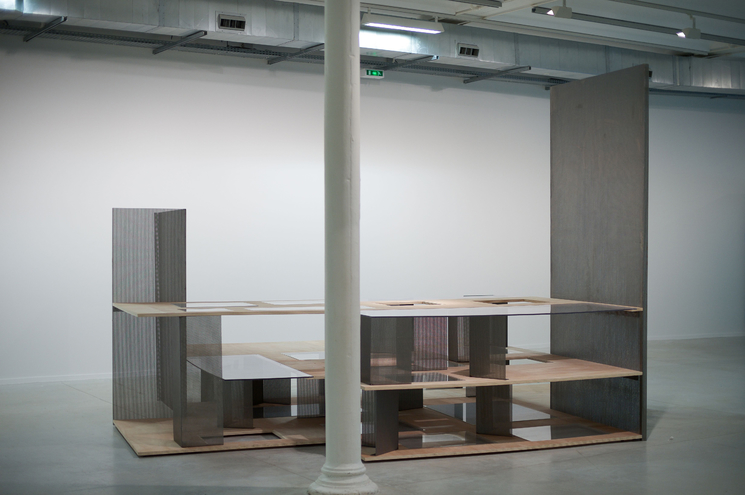
Exhibitions
04 - 26 February 2017
135, 125iso, 23x36, M6, 35.
In situ art project by Aurélie Pétrel
The CPIF has quite literally turned into a laboratory. The 40th anniversary of the Centre Georges Pompidou, whose celebrations the CPIF has been asked to participate in, provides the ideal opportunity to reconsider the works of art and the techniques, relationships with the body, the world, culture and museums that prevailed in the 1970s, in short to reconsider the period’s artistic and ethical standpoints. Aurélie Pétrel’s in situ research is based on her analysis of this moment in time.
Aurélie Petrel has transformed the room that is usually used to exhibit finished works into a photographic studio, a place where she can shoot and then print photos. It will be the place where the image is made, where a key part of the artist’s work takes place, at the heart of the passage between ‘latent images’ - in other words ones that are waiting to be awakened - and ‘revealed images’. Although she has been working in digital photography for several years now, for this experiment she will use so-called silver-gelatin or analogical techniques in what is for her a return to her origins, as she questions images produced by others who were active at a period when she first came into the world. Through this experiment she questions how the work of these artists is still relevant today and situates her own artistic activity.
Photo: Table Simulation, 2015. Commissioned by FRAC Centre. © Aurélie Pétrel
Aurélie Pétrel (born 1980 in Lyon) studied at the École des Beaux-Arts de Lyon. She is currently represented by several galleries: Galerie Houg (Paris) and Gowen Contemporary (Geneva). Since 2012, she has been working in collaboration with Vincent Roumagnac under the name Pétrel I Roumagnac (duo) whose work is represented by Galerie Escougnou-Cetraro (Paris). In her work, Aurélie Pétrel questions the status and representation of the image and how it is produced. Outdoors she becomes a photographer shooting images that are never anodyne and which reveal more than they show; once back in her studio, she become a sculptor creating installations that transfer the flat, two-dimensional photographic print into three-dimensional or architectural pieces.
Two key notions provide a means to apprehend Aurélie Pétrel’s work: the notion of a ‘partition photographique’ (photographic score/partition) and of an ‘image située’ (a situated image).
The notion of a ‘partition photographique’ plays with the two meanings of the word ‘partition’ in French – both a musical score or piece of sheet music and the idea of partition, division, sharing and redistribution. In the context of photography, the images at the embryonic stage of her work are, at first, latent or potential images, like a score destined to be played and ‘awakened’ in the second phase, as part of an installation produced for a specific exhibition space (from the exhibition catalogue Au delà de l’image, Galerie See Studio, 2014).
The notion of the ‘situated image’ was the subject of much reflection during the second half of the 20th century. According to modernist thinking, the work of art ‘happens’ but does not have a ‘location’. It wasn’t until the end of the 20th century and ‘Spaces’, an exhibition at the MOMA in New York that the actual space where the work of art is situated began to be considered. The ‘situated image’ is like Michel Gauthier’s concept of the ‘situated artwork’, it “accepts its situation and engages with the venue where it has been placed.” (Michel Gauthier, Fabricateurs d’espaces, Les Presses du Réel, 2011).
